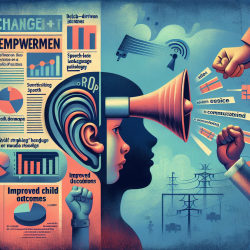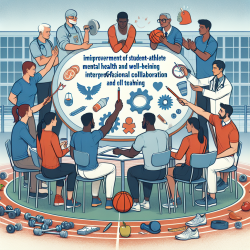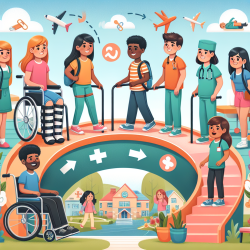Introduction
In the world of speech-language pathology, making data-driven decisions is crucial for creating successful outcomes for children. The research article "Addressing Core Challenges for the Next Generation of Type 2 Translation Research and Systems: The Translation Science to Population Impact (TSci Impact) Framework" offers valuable insights into how practitioners can enhance their skills and improve outcomes through evidence-based interventions.
Understanding the TSci Impact Framework
The TSci Impact Framework is a heuristic model that outlines the core challenges and necessary strategies for advancing Type 2 (T2) translation research. This research focuses on the processes and systems through which evidence-based interventions are adopted, implemented, and sustained on a large scale. The framework highlights three key components:
- Translation Phases: Pre-adoption, adoption, implementation, and sustainability.
- Multiple Contexts: Translation occurs at various levels, from community to national.
- Infrastructure Supports: Practice and research infrastructures are essential for successful translation.
Core Challenges and Strategies
The article identifies two core challenges in advancing T2 translation research:
- Building Infrastructure and Capacity: Developing systems-oriented scaling up of evidence-based interventions with integrated practice-oriented T2 research.
- Developing a Research Agenda: Improving research methods and creating a strategic agenda for advancing T2 translation science.
To address these challenges, practitioners should focus on building partnerships with scientists, engaging governmental agencies, and leveraging financing structures to support infrastructure development.
Practical Implications for Practitioners
For speech-language pathologists, the TSci Impact Framework offers a roadmap for integrating evidence-based practices into everyday clinical work. By focusing on the translation phases, practitioners can ensure that interventions are not only adopted but also effectively implemented and sustained. This approach can lead to improved outcomes for children, particularly in underserved communities where access to quality interventions is limited.
Encouraging Further Research
The framework also encourages practitioners to engage in further research to better understand the factors influencing the adoption and implementation of interventions. By participating in research, practitioners can contribute to the development of more effective strategies for translating science into practice, ultimately enhancing the health and well-being of children.
Conclusion
The TSci Impact Framework provides a comprehensive approach to addressing the core challenges in T2 translation research. By focusing on building infrastructure, developing a research agenda, and engaging in partnerships, practitioners can enhance their skills and improve outcomes for children. To explore the original research paper and gain a deeper understanding of the TSci Impact Framework, please follow this link: Addressing Core Challenges for the Next Generation of Type 2 Translation Research and Systems: The Translation Science to Population Impact (TSci Impact) Framework.










